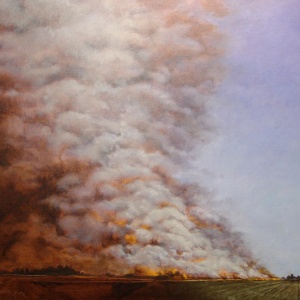
One of the greatest challenges of this century is figuring out how to feed more people, while significantly reducing greenhouse gas emissions from agriculture, just as other demands on land - for example, for sequestration and bioenergy production - are increasing.
This study uses a new methodology capable of disaggregating global emissions from agriculture and land used by different sources; calculating emissions intensities (per unit: product, area); tracking historical trends; and making future projections. In doing so, it provides unique insight into the global evolution and potential future trends in emissions from global agriculture. A sister paper, reviewed by FCRN here, further disaggregates and analyses these trends by world region and provides further description of the methods used.
The study demonstrates substantial decoupling of greenhouse gas emissions from food production between 1970 and 2007, with emissions per unit of product declining by 39% and 44% for crop and livestock production. Yet, these efficiency gains in GHG emissions have not kept pace with the larger increase in production - crop and livestock production have increased by 118% and 102%, respectively - and so absolute emissions have been growing.
Projecting the same rate of efficiency improvements forwards to 2050, in combination with FAO food demand projections, shows a levelling off of future emissions from global cropland, but a continued rise in emissions from livestock production, as the current rate of efficiency improvement is unable to match that of growing demand.

Incorporating this decoupling effect into future emissions projections for agriculture marks a significant difference between this and other studies, resulting in projected emissions for agriculture that are over 20% lower. The difference that efficiency gains make, is illustrated in Figure 10 below, where the yellow line shows future agricultural emissions based on constant 2007 levels of emissions intensity, and the red range shows future agricultural emissions, based on the extrapolation of historical efficiency gains, based on two different methods (linear and exponential).

Also illustrated in the figure above is the 80% global reduction trend in emissions by 2050, thought necessary to keep global warming below 2 °C above pre-industrial levels. Visually, the scale of the challenge is striking, and it is illustrated further by the fact that this level of mitigation would only just be achieved by continuing the same rate of historical efficiency gains all the way 2050, combined with using all of the total global biophysical mitigation potential of soil carbon sequestration (the green line). It should be noted that this level of sequestration is not at all realistic, due to many technical, institutional and economical barriers that would block its realisation.
What is apparent from this study is that we are on a trajectory to reduced emissions from agriculture and land use change, and that these emission sources play a vital role in climate change mitigation solutions. However, emissions reductions from the agricultural system can only take place to the extent that efficiency improvements exceed the rate of demand increase, and in reality, efficiency improvements have limits. This is especially the case when considering the need to ensure that our future solutions deliver co-benefits in other environmental and societal arenas, moving beyond intensification towards what is now called ‘sustainable intensification’.
The authors note that through intensification, agricultural GHG emissions can only be reduced to a certain level. To move beyond this, a simultaneous focus on other parts of the food system will be necessary to increase food security whilst reducing emissions, including dietary shifts and food waste reductions.
Abstract
Since 1970 global agricultural production has more than doubled; contributing ~1/4 of total anthropogenic greenhouse gas (GHG) burden in 2010. Food production must increase to feed our growing demands, but to address climate change, GHG emissions must decrease. Using an identity approach, we estimate and analyse past trends in GHG emission intensities from global agricultural production and land-use change and project potential future emissions. The novel Kaya–Porter identity framework deconstructs the entity of emissions from a mix of multiple sources of GHGs into attributable elements allowing not only a combined analysis of the total level of all emissions jointly with emissions per unit area and emissions per unit product. It also allows us to examine how a change in emissions from a given source contributes to the change in total emissions over time. We show that agricultural production and GHGs have been steadily decoupled over recent decades. Emissions peaked in 1991 at ~12 Pg CO2-eq. yr?1 and have not exceeded this since. Since 1970 GHG emissions per unit product have declined by 39% and 44% for crop- and livestock-production, respectively. Except for the energy-use component of farming, emissions from all sources have increased less than agricultural production. Our projected business-as-usual range suggests that emissions may be further decoupled by 20–55% giving absolute agricultural emissions of 8.2–14.5 Pg CO2-eq. yr?1 by 2050, significantly lower than many previous estimates that do not allow for decoupling. Beyond this, several additional cost-competitive mitigation measures could reduce emissions further. However, agricultural GHG emissions can only be reduced to a certain level and a simultaneous focus on other parts of the food-system is necessary to increase food security whilst reducing emissions. The identity approach presented here could be used as a methodological framework for more holistic food systems analysis.
Reference
Bennetzen, E. H., Smith, P., & Porter, J. R. (2015). Decoupling of Greenhouse Gas Emissions from Global Agricultural Production: 1970 - 2050. Global Change Biology, n/a-n/a. http://doi.org/10.1111/gcb.13120
Read the full article here (paywall)
See also the sister paper looking at the trends in agricultural emission in different world regions over the last 40 years, summarised by FCRN here.







Post a new comment »